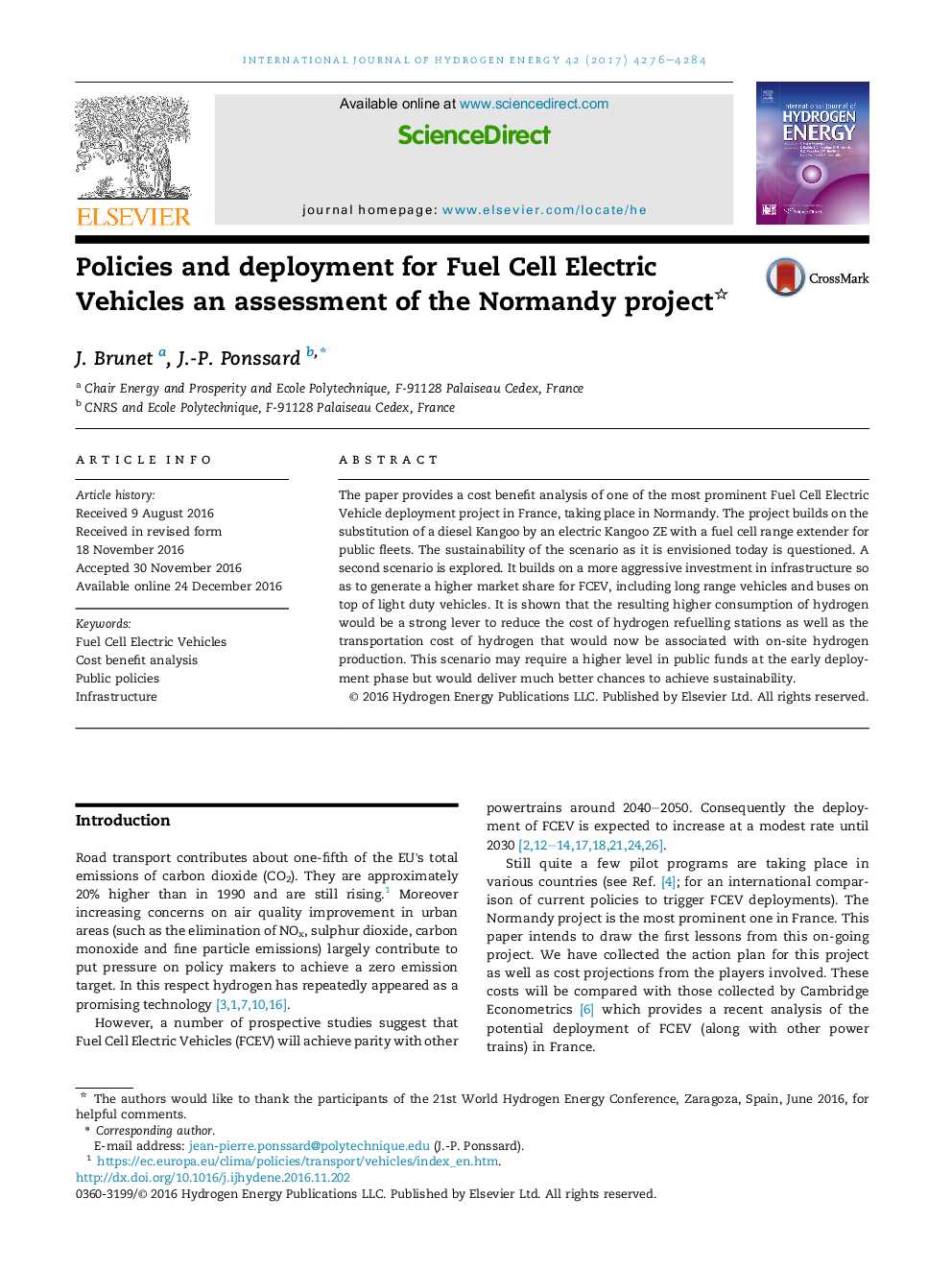| Article ID | Journal | Published Year | Pages | File Type |
|---|---|---|---|---|
| 5146347 | International Journal of Hydrogen Energy | 2017 | 9 Pages |
â¢The sustainability of the Normandy plan for FCEV light duty vehicles is questioned.â¢A more aggressive investment in infrastructure would be preferable.â¢A higher market share would result for FCEV, including long range vehicles and buses.â¢The higher consumption of hydrogen would be a strong lever to reduce its delivered cost.â¢But an earlier and higher level in public funds for infrastructure would be needed.
The paper provides a cost benefit analysis of one of the most prominent Fuel Cell Electric Vehicle deployment project in France, taking place in Normandy. The project builds on the substitution of a diesel Kangoo by an electric Kangoo ZE with a fuel cell range extender for public fleets. The sustainability of the scenario as it is envisioned today is questioned. A second scenario is explored. It builds on a more aggressive investment in infrastructure so as to generate a higher market share for FCEV, including long range vehicles and buses on top of light duty vehicles. It is shown that the resulting higher consumption of hydrogen would be a strong lever to reduce the cost of hydrogen refuelling stations as well as the transportation cost of hydrogen that would now be associated with on-site hydrogen production. This scenario may require a higher level in public funds at the early deployment phase but would deliver much better chances to achieve sustainability.
